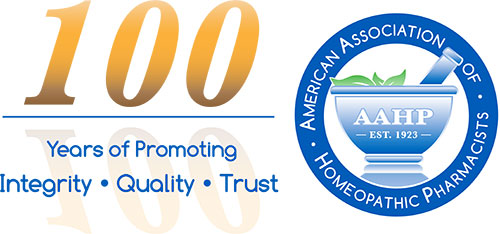How Real-World Data Is Impacting Health Care Decisions Today
By Mark Land, AAHP President
I have been interested in the application of Real-World Data (RWD) and Real-World Evidence (RWE) for some time now. Originally, I confused RWD and RWE with Patient Centered Data (PCD). In doing so, I thought that patient-supplied evaluation, such as Quality of Life, Compliance, and Outcome assessments, might be of value in clinical research of homeopathic drug products. Measurements of those types are PCD. However, after recently attending a few seminars on RWD and RWE, I came to a better understanding of these sources of outcomes data.
Traditionally, data collected outside of the clinical study protocol has not been applied to regulatory decision-making. Research targets today, including therapies for increasingly smaller populations and diseases that can only be evaluated based on surrogate biomarkers, create the need for additional sources of information and analyses to support regulatory decisions. The 21st Century Cures Act, passed in 2016, places additional focus on the use of RWE to support regulatory decision-making, including approval of new indications for approved drugs. Congress defined RWE as data regarding the usage, or the potential benefits or risks, of a drug derived from sources other than traditional clinical trials.
The use of computers, mobile devices, wearables, and other biosensors to gather and store huge amounts of health-related data has been rapidly accelerating. This data could help us to better design and conduct clinical trials and studies in the health care setting and to answer questions previously thought infeasible. In addition, with the development of sophisticated, new analytical capabilities, we are better able to analyze these data and apply the results of our analyses to medical product development and approval.
RWD is the data relating to patient health status and/or the delivery of health care routinely collected from a variety of sources. RWD can come from a number of sources, for example:
- Electronic health records (EHRs)
- Claims and billing activities
- Product and disease registries
- Patient-generated data including in home-use settings
- Data gathered from other sources that can inform on health status, such as mobile devices
RWE is the clinical evidence regarding the usage and potential benefits or risks of a medical product derived from analysis of RWD. RWE can be generated by different study designs or analyses, including but not limited to randomized trials (e.g., large simple trials; pragmatic trials; and prospective and retrospective observational studies).
What is the application for homeopathic products? A few things come to mind. First, RWD may be used as a comparative arm for evaluating outcome data in a traditional clinical trial. This could reduce the number of subjects and complexity of the study. Second, RWD is often the comparator in observational trials. Increasingly, observational trials are an important way to evaluate treatment outcomes by illness category.
What are the requirements for RWE? Simply put, it must be fit for its intended purpose. It must have been collected reliably and it must be of adequate quality. There must be transparency in how the data was collected and evaluated, and it must address the question under evaluation. For example, data collected from multiple, incompatible, nondisclosed databases on the effects of global warming would have little meaning when evaluating the effectiveness of a health care product.
Further Reading from the U.S. FDA:
- Guidance: Submitting Documents Utilizing Real-World Data and Real-World Evidence to FDA for Drugs and Biologics
- Guidance: Use of Real-World Evidence to Support Regulatory Decision-Making for Medical Devices
- Guidance: Use of Electronic Health Records in Clinical Investigations
- Framework for FDA’s Real-World Evidence Program
- Real-World Evidence — What Is It and What Can It Tell Us?External Link Disclaimer
- Accelerating Development of Scientific Evidence for Medical Products within the Existing US Regulatory Framework (PDF - 180KB)
- CDER Small Business and Industry Assistance Webinar: Framework for FDA’s Real-World Evidence Program-Mar 15, 2019
- https://www.fda.gov/science-research/science-and-research-special-topics/real-world-evidence
